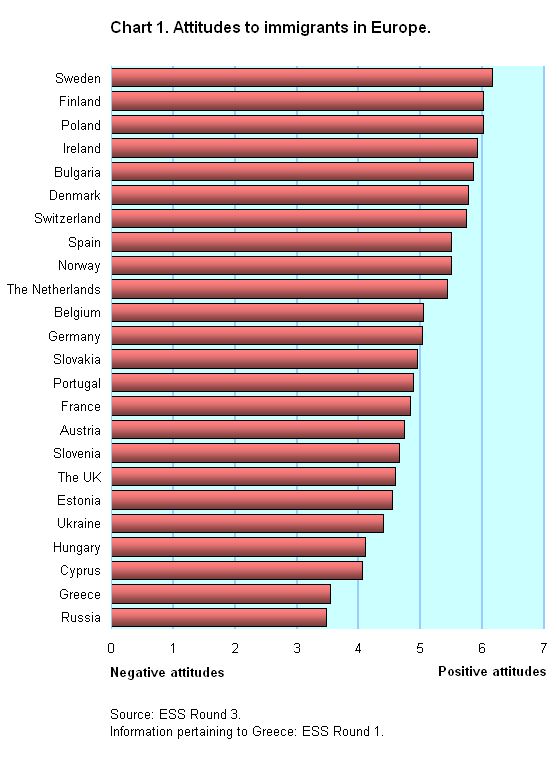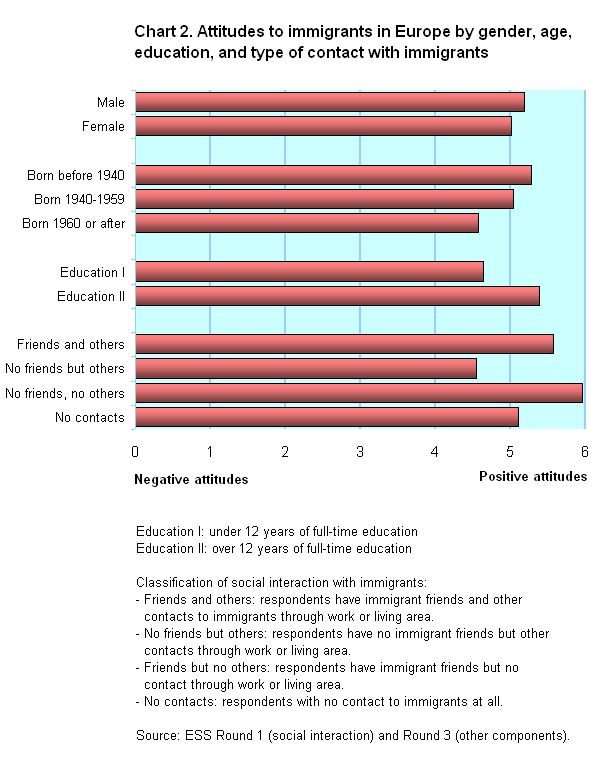 |
Issue 28 (3/2009)
|
|||
FSD Bulletin is the electronic newsletter of the Finnish Social Science Data Archive. The Bulletin provides information and news related to the data archive and social science research.
|
Data Archiving and Re-use Experts Gathered in TampereHeikki Ervasti, Professor, Doctor of Political Science, Department of Social Policy, University of Turku Increasing immigration is a fact in most European countries. This calls for adaptation both from immigrants and from the native population. Cartoon debates, 'honour' killings, terrorist acts and demonstrations are all signs of cultural clashes. Anti-immigration parties attract voters in many parts of Europe. Social scientists have been increasingly interested in research on attitudes to immigrants. According to some researchers, immigration and increasingly heterogeneous societies are eroding social trust and social capital which have formed the basis of European societies. The European Social Survey (ESS) provides comprehensive, high quality and up-to-date data for studying attitudes. Already the first round of the survey series, fielded in 2002, contained a module on the impact and scale of immigration. Later rounds have contained questions on immigration in the core questionnaire. In this article, I will study how attitudes towards immigration vary across countries and across population groups. I will also explore what the ESS data tells us about the social and political impact of immigration. Particular attention will be paid to whether attitudes to immigrants are associated with values relating to social trust and solidarity. Tolerant Attitudes in Nordic CountriesThe 50 questions included in the first round module on immigration allow constructing a variety of indicators. On the whole, all indicators tend to demonstrate the same pattern of differences across European countries.
I will use an indicator which consists of three questions related to the impact of immigration. The first question asked the respondents to evaluate whether immigration was bad or good for the country's economy. The second asked them to evaluate whether the country's cultural life is generally undermined or enriched by immigration, and the third whether immigration made the country a worse or better place to live. (1) All three used an evaluation scale from 1 to 10. A new variable was constructed out of these three variables, with values varying from 1 to 10. Attitudes to immigrants vary from country to country and within countries by individual characteristics. Chart 1 presents the mean of attitudes to immigration in various European countries and Chart 2 by a number of background variables. High value in the chart means positive attitude to immigrants. Chart 1 demonstrates that Swedes and Finns have the most positive attitudes in Europe. Danes and Norwegians are slightly more negative but are still more positive than the European mean. The former eastern block countries, Greece and Cyprus show the most negative attitudes. How can variations between countries be explained? To what extent can they be explained by the social and economic conditions of the country and social and migration policies adopted? My analysis shows that on the macro level, wealth of the population and social policy adopted were the most important sources of differences in attitudes toward immigration. The results indicate that universal social policies, which characterise the Nordic countries, have the effect of making attitudes more positive on the macro level. (2) Social Interaction Has an Effect on AttitudesOn the individual level, gender, age, education and social interaction explain to a large extent variations in attitudes across inhabitants of a country. The results shown in Chart 2 are congruent with the conclusions of many other prior studies: women are more tolerant towards immigration than men, young people are more tolerant than older people, and the highly educated have a more positive attitude than people with lower education. Existing social interaction with immigrants has high impact on attitudes. However, whether the impact is negative or positive depends on the type of contact. One can assume that pleasant contacts are associated with positive attitudes and unpleasant ones to negative attitudes. ESS Round 1 data enable the study of contacts according to contact type. One question asked whether the respondents have any immigrant friends and the second whether they have any immigrants as colleagues at work. There was also a question on whether the respondent lived in an area where there were many, some or practically no immigrants. One can assume that voluntary friendships with immigrants are associated with positive attitudes whereas contacts created by work or by living area, and thus not voluntary, do not have the same effect. One can assume that contacts created by circumstance and environment are more often associated with negative experiences than contacts of voluntary nature.
The new constructed variable measuring social interaction displayed in Chart 2 has four categories: 1) respondents have immigrant friends and other contacts to immigrants through work or living area, 2) respondents have no immigrant friends but other contacts through work or living area, 3) respondents have immigrant friends but no contact through work or living area, and 4) respondents with no contact to immigrants at all. The means displayed in Chart 2 confirm the assumptions presented in the previous paragraph: persons with contacts to immigrants through friendship only have the most positive attitudes whereas those with contacts to immigrants only through work or living area show the most negative attitudes. Immigration Does Not Decrease Popularity of Welfare StateWhat kind of political consequences does increased immigration have? Recently, much attention has been paid to the theory presented by Alberto Alesina who maintained that increased ethnic/racial diversity erodes interpersonal trust and solidarity on which Western societies are based. In particular, it may call the welfare state in question. According to Alesina, the native population may cease to support income transfers when they notice that they fund the social welfare but most of the resource transfers go to immigrants. The ESS data contain a number of indicators measuring interpersonal trust. Attitudes towards income transfers are also measured, so the data can be used to test Alesina's theory in a cross-sectional situation. ESS data analysis indicates that people's attitudes are more complex that the theory would lead us to expect. The evidence of ESS data supports the theory in the sense that attitudes to immigrants are positively correlated with social trust, both on the macro and the individual level. Negative attitudes are thus associated with low trust. On the individual level, particularly the non-voluntary contacts mentioned above appear to decrease trust. However, analysis of the ESS data does not support Alesina's theory in the sense that low trust and negative attitudes to immigration are not associated with willingness to reject the welfare state or income transfers. In fact, there is some evidence to the contrary: those population groups which most regard immigration as a threat, would like to increase social security offered by the welfare state. Changes in Attitudes SurveyedThe ESS data indicate that most Europeans have a calm, positive attitude to increasing immigration. In all ESS countries, only a small minority would like to considerably restrict entry into their country. One can also conclude from the data that there has not been a lot of change in attitudes to immigration during the 2000s. However, the first round was fielded only in 2002 so the time period is not that long as yet. For example, a Finnish longitudinal study on attitudes to immigrants demonstrates a trend of positive change in attitudes over 1987-2003. (5) In spite of the present stable nature of attitudes, it is easy to presume that there will be changes in attitudes as immigration increases. More immigrants mean more contacts between them and the native population. Future rounds of the ESS will allow us to study whether these contacts will cause attitudes to change more to the positive or to the negative.
Citations and footnotes: Data sources: More information:
|

